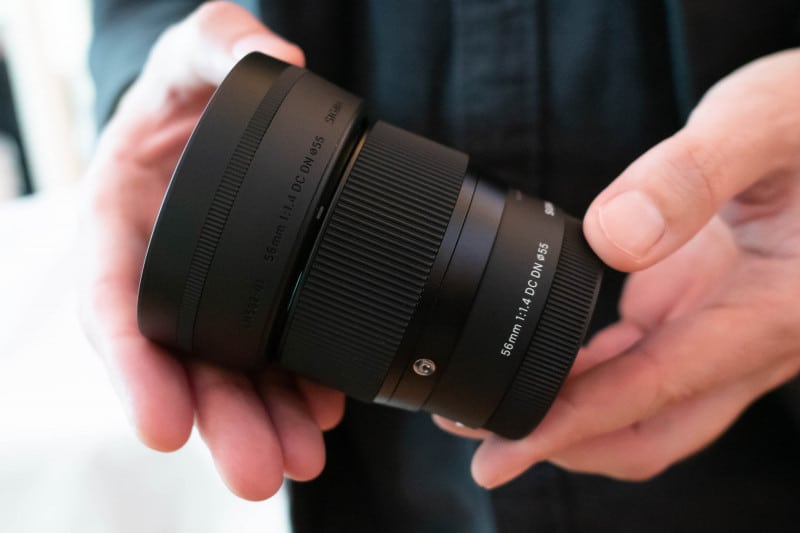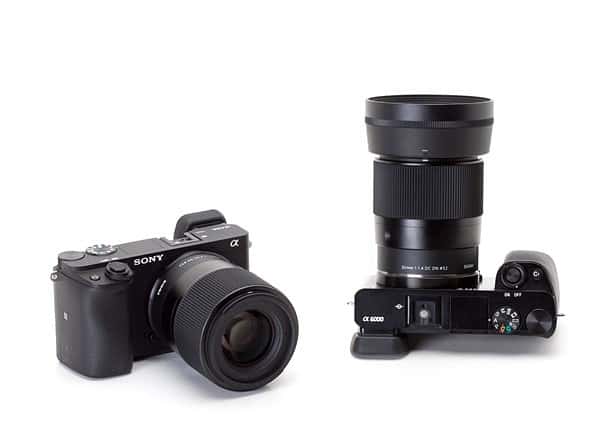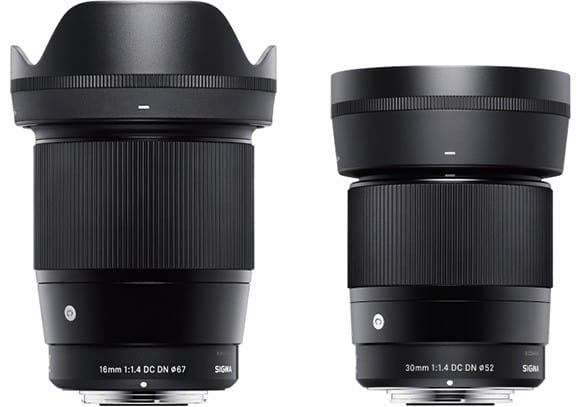Last Updated on June 26, 2020
Itching to know how Sigma’s DC DN EF-M primes were able to balance on Canon’s latest APS-C mirrorless flagship, the EOS M6 Mark II?
Take a peek at some of the recently released APS-C primes for Canon as shown at the WPPI (Wedding Professional Photographers International) 2020.
Video credit: Gordon Laing
Sigma 56mm F1.4 DC DN
This is the most compact of them all, offering a focal length of around 90mm. Actually, this is a fantastic option for capturing portraits. Moreover, it is light on external controls as you can see only one rubberized manual focus ring on its exterior.
Additionally, you can see a 55mm filter thread around the front of the lens along with the 9 aperture blades down the barrel. Despite feeling dense, the lens only weighs 280g, which balances well on the EOS M6 Mark II. The lens focuses down to 0.5mm or ~20” having a max reproduction ratio of 0.14X.
Its optical formula is based on the 10 elements in 6 groups, which includes a super-low dispersion element.
However, the problem is that you can’t see much around the back of the lens. You may not see a rear gasket either to keep moisture or dust from the lenses.
Sigma 30mm F1.4 DC DN
Actually, there is a bit of a competition between Sigma’s 30mm F1.4 DC DN and Canon’s EF-M 32mm F1.4. While Sigma provides a 35mm-equivalent focal length of 48mm, Canon offers 51.2mm.
However, this type of difference might not be a big factor in influencing your decision to buy, except with the greater magnification ratio and higher price point.
Even so, the Sigma 30mm F1.4 DC DN can balance well on the EOS M6 Mark II because it is a bit longer and lighter than the 56mm F1.4. Likewise, you may notice that there is only one external control, a well-damped rubberized focus ring.
Its optical formula is based on 9 elements in 7 groups, being one of the elements as aspherical and another being double-sided aspherical. It has 9 aperture blades with a front filter diameter of 52mm. This is actually a perfect fit for a Sony APS-C camera.
Sigma 16mm F1.4 DC DN
The largest is the Sigma 16mm F1.4, being heaviest of the 3 by 125g and 1.5X longer than the 56mm F1.4. EF-M users will likely pick this having a single native wide-angle lens. Despite having a slower aperture, it has an excellent 11-22mm F4-5.6 zoom.
This should be a great option for astrophotography or lower light shooting. In fact, it can balance well with the EOS M6 Mark II despite being a bit heavy in front. However, it is not a comfortable combination when handled with Canon’s grip-less EOS M200.
The optical formula is based on the 9-blade aperture, similar to the other EF-M primes. You should consider this a great option for creating 18-point sunstars when faced with landscape scenes.
It is also the most optically complex aside from being the largest in the group having 16 elements in 13 groups.





